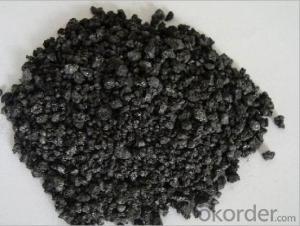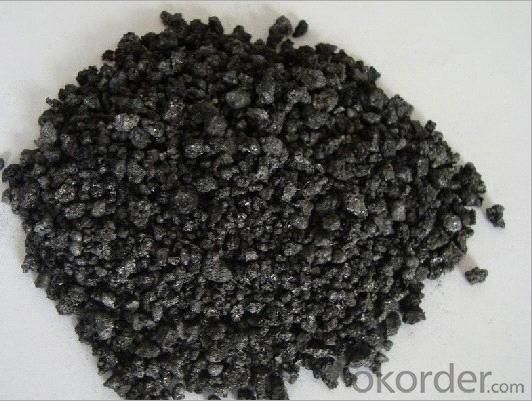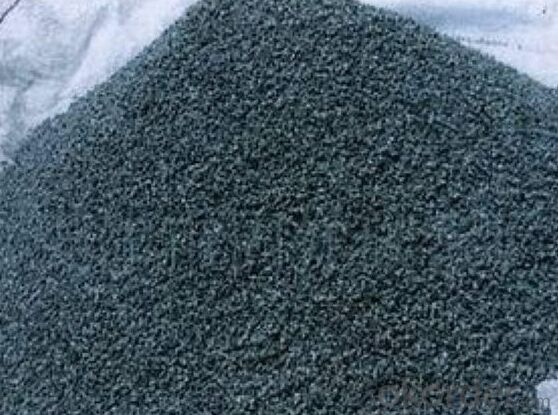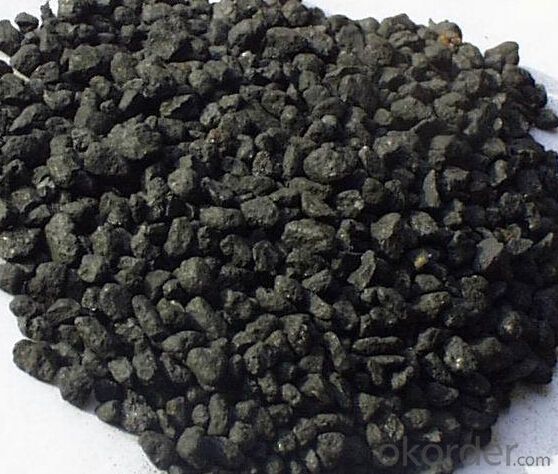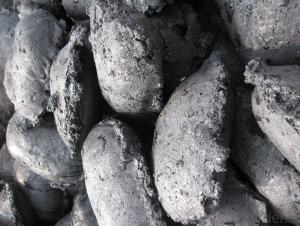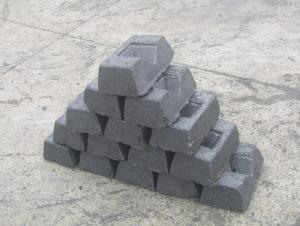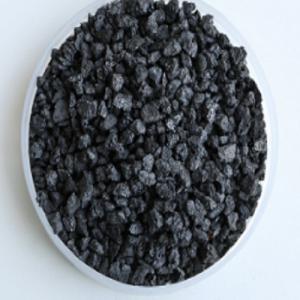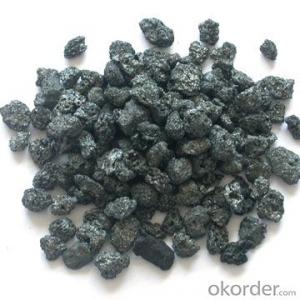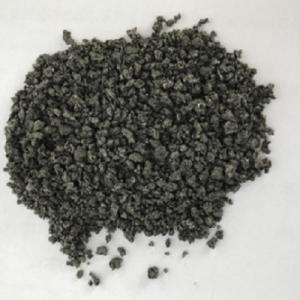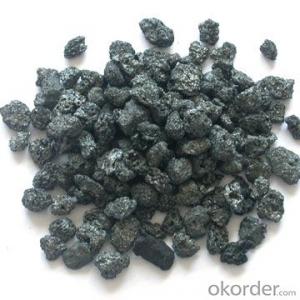Calcined Petroleum Coke High Quality
- Loading Port:
- Tianjin
- Payment Terms:
- TT or LC
- Min Order Qty:
- 20 m.t.
- Supply Capability:
- 3000 m.t./month
OKorder Service Pledge
OKorder Financial Service
You Might Also Like
Quick Details
Place of Origin: Hebei, China (Mainland)
Application: aluminium industry and carbon industry
Chemical Composition: Density 2.04g/cm3
Packaging & Delivery
| Packaging Details: | 25kg/bag 50kg/bag 200kg/bag 1000kg/bag Or according with client needs |
|---|---|
| Delivery Detail: | 2 weeks |
Specifications
Calcined Petroleum Coke High Quality
Petroleum coke products can be divided into needle coke, sponge coke, projectile coke and coke breeze four kinds.
Calcined Petroleum Coke
F.C.: 98.5%MIN
ASH: 0.8% MAX
V.M.: 0.7%MAX
S:0.5%MAX
Moisture: 0.5%MAX
Structure
Calcined Petroleum Coke High Quality
Shape: granule
- Dimensions: 0-1mm, 1-5mm, 1-6mm, 2-8mm, etc
- Product Type: Carbon Additive
- C Content (%): 98-99.5% MIN
- Working Temperature: -
- S Content (%): 0.5%-0.7%MAX
- Ash Content (%): 0.7%MAX
- Volatile:0.8%MAX
- Moisture: 0.5% MAX
- ADVANTAGE: low ash & sulfur
- COLOR: Black
Feature
Calcined Petroleum Coke High Quality
Physics and chemistry performance :
Unit | Index | |||||
No.1 | No.2 | No.3 |
| |||
Density | g/cm3 | 2.04 | 2.00 | 2.00 | ||
sulphur content | %≤ | 0.5 | 1.0 | 2.5 | ||
volatility | %≤ | 0.5 | 0.5 | 0.5 | ||
ash content | %≤ | 0.5 | 0.5 | 0.5 | ||
moisture | %≤ | 0.3 | 0.5 | 0.5 | ||
charcoal | %≤ | 98.5 | 98.0 | 98.0 | ||
Image
Calcined Petroleum Coke High Quality

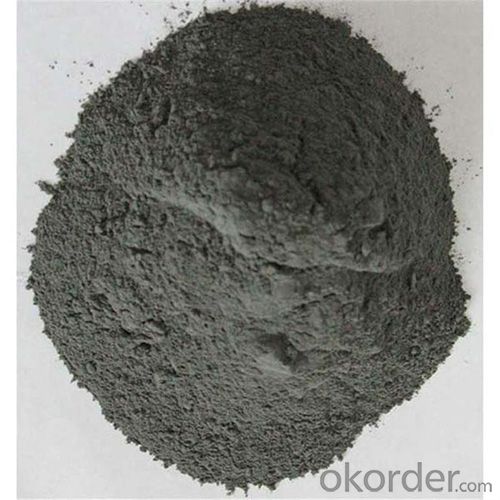
FAQ:
Calcined Petroleum Coke High Quality
How to classify calcined petroleum coke?
1) According to difference of sulfur content, can be divided into high sulfur coke (sulfur content more than 4%), sulphur in coke sulfur content (2% 4%) and low sulfur coke (sulfur content below 2%).
2) Petroleum coke products can be divided into needle coke, sponge coke, projectile coke and coke breeze four kinds:
3) Needle coke, has obvious needle-like structure and fiber texture, mainly used for steel-making in high power and ultra-high power graphite electrode. As a result of needle coke in sulfur content, ash content, volatile matter and true density and so on have strict quality requirements, so the production process of needle coke and raw materials have special requirements.
4) The sponge coke, high chemical reactivity, low content of impurities, mainly used in the aluminum industry and carbon industry.
5) Focal or spherical coke: the projectile shape is round, diameter 0.6-30 mm, usually from the production of high sulphur, high asphaltic residual oil, can only be used as industrial fuel power generation, cement etc.
6) Coke breeze: fluidized coking process, the fine particles (0.1- 0.4 mm) in diameter, high volatile, high expansion coefficient, cannot be directly used for electrode preparation and carbon industry.
Advantage:
Calcined Petroleum Coke High Quality
1. High quality and competitive price.
2. Timely delivery.
3. If any item you like. Please contact us.
Your sincere inquiries are typically answered within 24 hours.
- Q: Power plant water treatment plant, there is a carbon removal device, the expert pointing out what the principle is it?
- The role of carbon dioxide removal in the process of ion exchange water treatment is to remove carbon dioxide from water, to reduce the load of anion exchange, to improve the economy of the water treatment system and the water quality of the effluent. The equipment uses blast degassing to remove the free carbon dioxide in the water. When the carbon dioxide content (Alkalinity) in the influent is greater than 50mg / 1, the carbon dioxide removal device is more economical and reasonable in the stage bed cleaning system. Behind the water treatment process in general on the hydrogen ion exchanger, as long as the choice of the right, the carbon remover, water residue of carbon dioxide is less than or equal to 5mg/L.
- Q: What are the different types of carbon-based polymers?
- There are several different types of carbon-based polymers, each with its own unique properties and applications. Some of the most common types include: 1. Polyethylene (PE): This is one of the most widely used polymers and is known for its high strength and chemical resistance. It is commonly used in packaging materials, plastic bottles, and pipes. 2. Polypropylene (PP): PP is similar to PE but with a higher melting point and better resistance to heat. It is commonly used in automotive parts, textiles, and food packaging. 3. Polystyrene (PS): PS is a lightweight and rigid polymer that is commonly used in packaging materials, disposable utensils, and insulation. 4. Polyvinyl chloride (PVC): PVC is a versatile polymer that can be rigid or flexible depending on the additives used. It is commonly used in pipes, electrical insulation, and flooring. 5. Polyethylene terephthalate (PET): PET is a strong and lightweight polymer that is commonly used in beverage bottles, food containers, and synthetic fibers. 6. Polyurethane (PU): PU is a flexible and durable polymer that is commonly used in foams, coatings, adhesives, and textiles. 7. Polycarbonate (PC): PC is a strong and transparent polymer that is commonly used in eyeglass lenses, safety goggles, and electronic components. 8. Phenolic resins: These polymers are known for their excellent heat resistance and are commonly used in coatings, adhesives, and electrical components. These are just a few examples of the many carbon-based polymers that exist. Each type has its own specific properties and applications, making them suitable for a wide range of industries and products.
- Q: What are the consequences of increased carbon emissions on educational systems?
- Increased carbon emissions can have several consequences on educational systems. Firstly, the health impacts of pollution caused by carbon emissions can lead to increased absenteeism among students and teachers, affecting the overall learning environment. Additionally, extreme weather events linked to climate change, such as hurricanes or heatwaves, can disrupt educational infrastructure, leading to school closures and disruptions in academic schedules. Moreover, the need to address climate change and its impacts may require educational institutions to allocate resources and curriculum time to climate-related topics, potentially diverting attention and resources from other subjects. Finally, the long-term consequences of climate change, such as rising sea levels or increased natural disasters, may force the relocation or rebuilding of educational facilities, causing significant disruptions to students' education.
- Q: What is carbon black dye?
- Carbon black dye is a pigment derived from the incomplete combustion of hydrocarbons, commonly used in various industries, including the production of inks, plastics, rubber, and coatings.
- Q: What is carbon fiber reinforced plastic?
- By combining carbon fibers with a polymer matrix, namely epoxy resin, carbon fiber reinforced plastic (CFRP) is produced. Its exceptional strength-to-weight ratio sets it apart as a lightweight alternative to conventional materials like steel and aluminum. The carbon fibers offer high tensile strength and stiffness, while the polymer matrix evenly distributes the load and ensures durability. The manufacturing process involves layering carbon fiber sheets or fabrics and saturating them with the polymer resin. Subsequently, this combination is cured under high temperature and pressure, resulting in a solid and rigid structure. The resulting material is incredibly strong, yet significantly lighter than materials of comparable strength, such as steel. Thanks to its unique properties, CFRP finds widespread applications in various industries. In aerospace and automotive sectors, it is commonly employed to reduce component weight and enhance fuel efficiency. Moreover, it finds use in sports equipment like bicycles, tennis rackets, and golf clubs, as it enables superior performance and maneuverability. The construction industry also utilizes CFRP, benefiting from its high strength and corrosion resistance for reinforcing structures like bridges and buildings. All in all, carbon fiber reinforced plastic is a versatile and high-performance material that combines the strength of carbon fibers with the flexibility of a polymer matrix. Its lightweight nature and exceptional mechanical properties make it a favored choice in industries where strength, weight reduction, and durability are paramount.
- Q: How does carbon impact the availability of freshwater resources?
- Carbon impacts the availability of freshwater resources through various interconnected processes. One of the major ways carbon affects freshwater availability is through climate change. The increased levels of carbon dioxide in the atmosphere, primarily due to human activities such as burning fossil fuels, contribute to global warming. This leads to changes in precipitation patterns, including altered rainfall distribution and intensity. Warmer temperatures caused by carbon emissions can increase evaporation rates and lead to more frequent and severe droughts in certain regions. This reduces the amount of water available for freshwater resources such as rivers, lakes, and reservoirs. Additionally, the changing climate can disrupt natural water cycles, affecting the recharge of groundwater aquifers, which are crucial sources of freshwater. Furthermore, carbon impacts the quality of freshwater resources. Acid rain, a result of increased carbon emissions reacting with atmospheric moisture, can acidify freshwater bodies and make them inhospitable for many aquatic organisms. This disrupts ecosystems and can lead to the loss of species that rely on freshwater resources for their survival. Another way carbon impacts freshwater availability is through its influence on land use. The conversion of forests and wetlands into agricultural or urban areas releases carbon stored in vegetation and soil. This not only contributes to carbon emissions but also reduces the capacity of natural ecosystems to retain and filter water. Forests, for example, play a vital role in maintaining the water cycle by absorbing rainfall and releasing it gradually into streams and groundwater. Deforestation disrupts this process and can lead to decreased water availability downstream. In conclusion, carbon emissions have a significant impact on the availability of freshwater resources. Through climate change, carbon alters precipitation patterns, leading to droughts and reduced water availability. It also affects the quality of freshwater through processes like acid rain. Additionally, land-use changes driven by carbon emissions can further decrease freshwater availability by disrupting natural water cycles.
- Q: How does carbon affect the pH of water?
- Carbon does not directly affect the pH of water. However, when carbon dioxide dissolves in water, it forms carbonic acid, which lowers the pH of the water, making it slightly more acidic.
- Q: How is carbon dioxide released into the atmosphere?
- Carbon dioxide is released into the atmosphere through a variety of natural and human activities. One of the primary sources of carbon dioxide is the burning of fossil fuels such as coal, oil, and natural gas for energy production. When these fuels are burned, carbon dioxide is released as a byproduct of combustion. This happens in power plants, factories, and vehicles that rely on these fossil fuels for energy. Deforestation and land-use changes also contribute to the release of carbon dioxide into the atmosphere. Trees absorb carbon dioxide through photosynthesis, and when they are cut down or burned, the stored carbon is released back into the atmosphere. This is particularly significant in tropical rainforests, where large amounts of carbon are stored in vegetation. Additionally, natural processes such as respiration and volcanic eruptions release carbon dioxide into the atmosphere. Respiration is the process by which living organisms, including humans and animals, breathe in oxygen and exhale carbon dioxide as a waste product. Volcanic eruptions release carbon dioxide stored in magma and rock formations. Overall, the release of carbon dioxide into the atmosphere is a combination of both natural and human activities. However, human activities, particularly the burning of fossil fuels and deforestation, have significantly increased the levels of carbon dioxide in the atmosphere, leading to the greenhouse effect and climate change.
- Q: What is the role of carbon in organic chemistry?
- Carbon is a fundamental element in organic chemistry, playing a crucial role in the structure and function of organic compounds. It is unique in its ability to form stable covalent bonds with other carbon atoms and a wide variety of other elements, leading to the vast diversity of organic molecules found in nature. Carbon's ability to bond with itself and other elements allows for the formation of long chains, branched structures, and ring systems, giving rise to the complex structures and shapes characteristic of organic compounds. In organic chemistry, carbon serves as the backbone for many important biomolecules such as carbohydrates, lipids, proteins, and nucleic acids that are essential for life. It is the basis for the structural diversity and complexity found in living organisms. Carbon's ability to form multiple bonds and its tetrahedral geometry also contribute to the versatility of organic compounds, allowing for the presence of various functional groups such as hydroxyl, carbonyl, amino, and carboxyl groups. Furthermore, carbon's ability to undergo chemical reactions, including oxidation, reduction, addition, substitution, and elimination reactions, is vital in organic chemistry. These reactions are fundamental for the synthesis and modification of organic compounds, enabling the creation of new molecules with specific properties and functions. Carbon's role as a central element in organic chemistry also extends to the study of reaction mechanisms, stereochemistry, and the understanding of the behavior and reactivity of organic compounds. Overall, carbon's unique properties and its ability to form stable covalent bonds with other elements make it the foundation of organic chemistry. Its presence allows for the diverse array of organic compounds that exist, and its participation in chemical reactions enables the synthesis and manipulation of these compounds. Without carbon, the field of organic chemistry and the study of life's building blocks would not be possible.
- Q: How are carbon nanotubes produced?
- Carbon nanotubes are produced through a process called chemical vapor deposition (CVD), which involves the use of a carbon-containing gas and a catalyst. In this process, a substrate is coated with a catalyst material, usually iron, nickel, or cobalt. The substrate is then placed in a high-temperature furnace, typically around 800-1000 degrees Celsius, and exposed to a carbon-containing gas, such as methane or ethylene. As the gas decomposes at high temperatures, carbon atoms are released and deposited onto the catalyst nanoparticles on the substrate. These carbon atoms then arrange themselves in a hexagonal pattern, forming a tube-like structure, which grows vertically from the catalyst particles. The growth of the nanotubes is driven by the difference in carbon solubility between the catalyst and the growing tube. The diameter, length, and alignment of the carbon nanotubes can be controlled by adjusting various parameters such as the temperature, gas flow rate, and catalyst material. By manipulating these parameters, researchers can produce carbon nanotubes with specific characteristics suitable for various applications. It's worth noting that there are other methods to produce carbon nanotubes, such as arc discharge and laser ablation, but CVD is the most commonly used method due to its scalability and ability to produce large quantities of nanotubes. Additionally, CVD allows for the growth of vertically aligned nanotube arrays, which are highly desirable for many applications.
Send your message to us
Calcined Petroleum Coke High Quality
- Loading Port:
- Tianjin
- Payment Terms:
- TT or LC
- Min Order Qty:
- 20 m.t.
- Supply Capability:
- 3000 m.t./month
OKorder Service Pledge
OKorder Financial Service
Similar products
Hot products
Hot Searches
Related keywords
